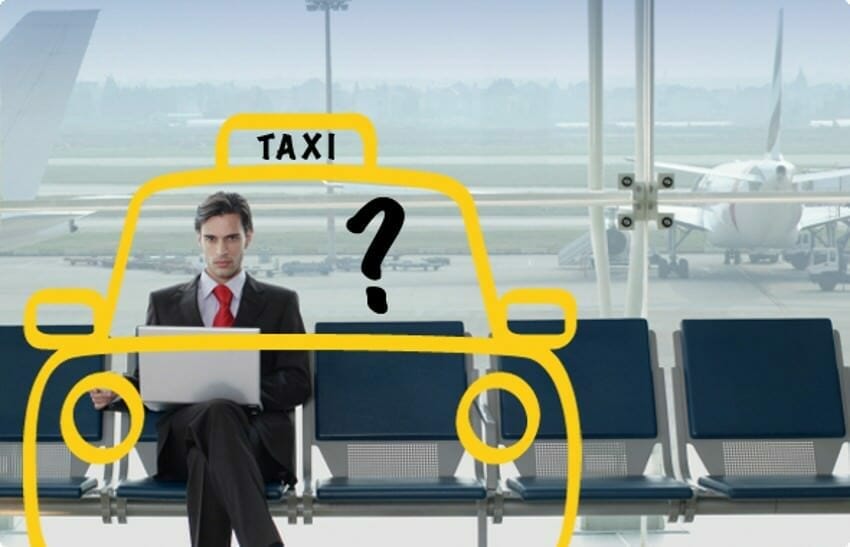For their successful, good life Information you really need: Government-funded publisher, awarded the Global Business Award as Publisher of the Year: Books, Shops, eCourses, data-driven AI-Services. Print and online publications as well as the latest technology go hand in hand - with over 20 years of experience, partners like this Federal Ministry of Education, customers like Samsung, DELL, Telekom or universities. behind it Simone Janson, German Top 10 blogger, referenced in ARD, FAZ, ZEIT, WELT, Wikipedia.
Disclosure & Copyright: Artwork created and licensed with Canva. Image material created by Verlag Best of HR – Berufebilder.de®.
Misunderstandings of body language: 5 tips against misinterpretation of communication
By Simone Janson (More) • Last updated on October 04.02.2024, XNUMX • First published on 18.07.2019/XNUMX/XNUMX • So far 4389 readers, 3879 social media shares Likes & Reviews (5 / 5) • Read & write comments
Body language is an important but often underestimated component of ours Communication. And it offers many opportunities for misunderstanding. 5 tips on what to do about it.

- Misunderstandings in communication through body language - this is how they arise
- Misinterpretations of nonverbal communication can have major disadvantages
- 5 typical body language signals with the potential for misunderstanding
- Conclusion: body language signals intention, but no specific meaning
- Top books on the subject
- Read text as PDF
- Advice on success, goal achievement or marketing
- Book eCourse on Demand
- Skate eBook as desired
Misunderstandings in communication through body language - this is how they arise
Recently at a business meeting: My long-term cooperation partner accompanied me after a very cordial Conversation to the train station and spread his arms. Now, having lived in Italy for some time, I'm generally open to hug gestures and returned the hug without thinking too much.
She was probably a little surprised, but reacted just as cheerfully as before - actually she had only wanted to open the door behind me for me. And that's just one example of misunderstandings in body language, like those in the Everyday life can occur more frequently.
Misinterpretations of nonverbal communication can have major disadvantages
The books on the subject (advertising)
But even in verbal communication there is infinite room for misunderstandings of every kind, one can assume that the rate for misinterpretations in nonverbal communication is much higher. And not always the result is as positive as in this case, in which it became a common, confidence-inspiring grin story.
Because body language and our reaction, which is appropriate to the respective context, can have a decisive influence on the course of a conversation or even a professional negotiation - both positively and negatively. Because the way we communicate non-verbally spiegelt unconsciously our Opinions, feelings and aspects of stress, i.e. things that we do not really want our counterpart to know about.
5 typical body language signals with the potential for misunderstanding
But what should you watch out for so that you correctly interpret body language, especially in a professional context, in order to avoid misinterpretations? Here is an overview of the most important signals with the potential for misunderstanding:
1. Smile - HOW does it matter
Smile is generally considered a positive signal. How often this is misunderstood, however, is always made clear to me when I walk around happily because I think about something positive - and people suddenly react to me just as positively positive because they think I'm smiling at them in greeting, even if that was not intended.
Even small children learn from their parents that by pulling the corners of their mouths up, they positive generate a reaction from those around you. But there is also the typical winner's smile, where you deliberately show your opponent your teeth and openly threaten them. The lips are only open wide enough to see the teeth. Our conscious mind wants to convince us that we are being met in a friendly and open manner here, but our subconscious also registers the threatening gesture behind it, an act of open aggression, so to speak, which can also lead to arguments.
In addition, there is the far more harmless-looking, obliging smile. The corners of the mouth pull up, but otherwise no muscles in the face move, even hers Eyes remain completely uninvolved. Sometimes it is accompanied by a slight nod of the head. This smile seems somehow tense, the binding gesture only feigned - behind it lies indifference and disinterest, in which the other person is fobbed off with a smile as uninteresting. This shows how fundamentally misleading a simple greeting gesture can be interpreted.
2. Crossed arms mean defense - right?
The same applies to arms crossed in front of the chest. This gesture also harbors a great deal of potential for misunderstandings. I recently found myself wanting to cross my arms because I didn't know what to do with them while standing - and then spontaneously looked for one Alternatives.
Basically, one should say goodbye to the widespread opinion that certain movements are clearly interpretable Significance have. Folding or crossing arms is often interpreted as a form of aggression or opposition. However, there are times when the arms are folded because the room or spot is cold. Folding the arms can also prevent fidgeting in cases of boredom.
For some People folding your arms is simply a comfortable and familiar position. Crossing my arms may signal my readiness to defend, I may just loosen up, or I may be tired and support myself with my arms. Maybe it's all of those things at the same time. However, as I did during my conversation, one should keep in mind that this gesture may be interpreted negatively. Angela Merkel's often mocked diamond gesture makes sense.
3. Micro-expressions that reveal the true feeling
While most of us have usually learned as adults at the latest to have our facial expressions under control, it sometimes reveals particularly strong ones emotions, namely in so-called micro-expressions,
These are sudden, very brief derailments of the face in which the true emotions break through the seemingly impenetrable mask. They usually only show up when people are trying to hide a very strong feeling that goes against what we are trying to show to the outside world.
A good example of this are raised eyebrows. These are also often interpreted very misleading, z. As a form of disbelief or mockery. If someone raises their eyebrows, it can also be unbelief or misunderstanding. However, raising eyebrows can also mean that someone is impressed, tries to understand a situation better, or just wants to end a conversation unobtrusively.
4. To stand by yourself and others
We all know this situation in which someone starts a conversation, but we cannot pay full attention to it for various reasons. This is then also reflected in our body language: E.g. by not turning your full attention to the person who is speaking to you. This causes irritation, reluctance, disrespect and more. It is better your full awareness focus on the matter that should take precedence. If you're too busy to talk, explain. If you want to be fully engaged in the conversation, face the person you're talking to.
But it is just as important to stand by your own opinion in a conversation: Because you often adopt the attitude of your conversation partner, Spiegelneurons send their regards. It can be a sign of this if you turn the tip of your foot towards the other person. This is also misleading, because turning your foot can mean other things as well. For example that you would prefer to have the conversation sitting down or, conversely, that you have to leave earlier. After all, it might just be about finding a comfortable posture.
5. Troubled looks - are you really nervous?
Even restless looks can be completely misinterpreted. When someone is constantly looking nervously from one side to the other, this is most obviously understood as a representation of concern or distress.
However, restless side glances or twitching eyes can also mean something completely different, such as a desire to take the conversation elsewhere. It could also mean that the person is trying to take the conversation in a different direction and accidentally lets their eyes flutter while being Brain already busy with other topics.
Conclusion: body language signals intention, but no specific meaning
Discounts for your success (advertising)!
In general, body language signals a basic intention, but not a specific meaning. And not every gesture is clearly assigned to a specific, firmly defined expression. Gestures are therefore ambiguous and should be interpreted that way. On the other hand, what body language conveys quite well is a person's emotional intention.
In fact, brain research shows that what we feel, first appearing in our body and only a nanosecond later in our consciousness. So when we're hungry, impatient, angry, or happy, our bodies will signal these feelings fairly reliably. And that's exactly what you can learn to read and understand. By the time the conscious mind recognizes that anger or joy, it has already manifested itself in our bodies. And that's what man learn to read and understand.
Often this happens unconsciously without thinking too much about it. We have Spiegelneurons in our brain that become active when our subconscious senses a feeling in each other. We spiegeln reflect the emotions of that other person so that we can better understand them. From an evolutionary perspective, this is too useful, because we like that fast and be able to react automatically to the feelings of others.
Top books on the subject
Read text as PDF
Acquire this text as a PDF (only for own use without passing it on according to Terms and conditions): Please send us one after purchase eMail with the desired title supportberufebilder.de, we will then send the PDF to you immediately. You can also purchase text series.
4,99€Buy
Advice on success, goal achievement or marketing
You have Ask round to Career, Recruiting, personal development or increasing reach? Our AI consultant will help you for 5 euros a month – free for book buyers. We offer special ones for other topics IT services
5,00€ / per month Book
Book eCourse on Demand
Up to 30 lessons with 4 learning tasks each + final lesson as a PDF download. Please send us one after purchase eMail with the desired title supportberufebilder.de. Alternatively, we would be happy to put your course together for you or offer you a personal, regular one eMail-Course - all further information!
29,99€Buy
Skate eBook as desired
If our store does not offer you your desired topic: We will be happy to put together a book according to your wishes and deliver it in a format of yours Choice. Please sign us after purchase supportberufebilder.de
79,99€Buy
Here writes for you
 Simone Janson is publisher, Consultant and one of the 10 most important German bloggers Blogger Relevance Index. She is also head of the Institute's job pictures Yourweb, with which she donates money for sustainable projects. According to ZEIT owns her trademarked blog Best of HR – Berufebilder.de® to the most important blogs for careers, professions and the world of work. More about her im Career. All texts by Simone Janson.
Simone Janson is publisher, Consultant and one of the 10 most important German bloggers Blogger Relevance Index. She is also head of the Institute's job pictures Yourweb, with which she donates money for sustainable projects. According to ZEIT owns her trademarked blog Best of HR – Berufebilder.de® to the most important blogs for careers, professions and the world of work. More about her im Career. All texts by Simone Janson.



















Post a Comment